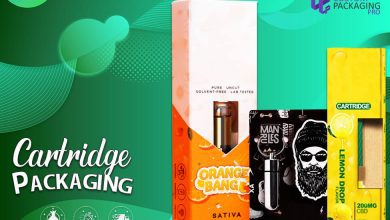Beyond the Box: Unveiling the Versatility of Cartons

We often take them for granted. Stacked in warehouses, lining supermarket shelves, or arriving at our doorsteps, cartonsare ubiquitous. But have you ever truly paused to consider the sheer versatility and importance of these humble containers? They’re more than just boxes; they’re the unsung heroes of logistics, packaging, and even art. Let’s delve into the fascinating world of cartons, exploring their diverse applications and the ingenuity behind their design.
From Simple to Sophisticated: A Look at Carton Types
The term “carton” encompasses a broad range of packaging solutions, each tailored to specific needs. At its most basic, a carton is a folding box made from paperboard or corrugated fiberboard. However, the variations are extensive:
- Folding Cartons: These are the most common type, often used for retail packaging of food, cosmetics, and pharmaceuticals. They are typically made from a single sheet of paperboard, die-cut and folded into shape. Their customizability allows for vibrant printing and intricate designs, making them essential for branding.
- Corrugated Cartons: Also known as cardboard boxes, these are the workhorses of shipping and storage. Their multi-layered construction, featuring fluted inner layers sandwiched between linerboards, provides exceptional strength and cushioning. Ideal for transporting heavy or fragile items, corrugated cartons are indispensable for e-commerce and industrial applications.
- Aseptic Cartons: Specifically designed for liquid food products like milk and juice, aseptic cartons are multi-layered and sterilized, ensuring long shelf life without refrigeration. Their airtight seal and light-blocking properties preserve freshness and nutrients.
- Gable Top Cartons: Recognizable by their distinctive peaked top, gable top cartons are commonly used for refrigerated liquids. Their pour spout and easy-to-grip design make them consumer-friendly.
The Power of Packaging: Cartons and Branding
Beyond their functional role, cartons play a crucial role in branding and marketing. A well-designed carton can capture consumer attention, communicate product information, and reinforce brand identity. Consider the vibrant colours and eye-catching graphics on a cereal box, or the sleek, minimalist design of a luxury cosmetic carton. These visual elements are carefully crafted to appeal to target audiences and create a memorable brand experience.
- Customization: Advanced printing techniques, including offset lithography and flexography, allow for high-quality graphics and intricate designs.
- Structural Design: Die-cutting and folding techniques enable the creation of unique shapes and features, enhancing product presentation and functionality.
- Sustainability: Increasingly, brands are opting for eco-friendly carton materials, such as recycled paperboard and biodegradable coatings, to appeal to environmentally conscious consumers.
Cartons in the Supply Chain: Efficiency and Protection
In the complex world of logistics, cartons are essential for ensuring the efficient and safe transportation of goods. Corrugated cartons, in particular, provide the necessary strength and protection to withstand the rigors of shipping. Their stackable design maximizes storage space and minimizes transportation costs.
- Protection: Corrugated cartons cushion products from impacts and vibrations, reducing damage during transit.
- Efficiency: Standardized carton sizes and shapes facilitate palletization and automated handling, streamlining warehouse operations.
- Traceability: Barcodes and RFID tags printed on cartons enable accurate tracking and inventory management.
Beyond Functionality: Cartons in Art and Innovation
The versatility of cartons extends beyond packaging and logistics. Artists and designers are increasingly exploring the creative potential of these humble materials.
- Sculpture and Installation: Corrugated cardboard, with its structural integrity and malleability, is a popular medium for creating large-scale sculptures and installations.
- DIY and Craft Projects: Cartons can be repurposed for a wide range of DIY projects, from storage boxes and organizers to children’s toys and furniture.
- Sustainable Design: Designers are exploring innovative ways to use recycled cartons to create eco-friendly products and furniture.
The Future of Cartons: Sustainability and Innovation
As environmental concerns grow, the packaging industry is increasingly focused on developing sustainable carton solutions. This includes:
- Recycled Materials: Increasing the use of recycled paperboard and corrugated fiberboard reduces waste and conserves resources.
- Biodegradable Coatings: Replacing traditional plastic coatings with biodegradable alternatives minimizes environmental impact.
- Lightweighting: Optimizing carton designs to reduce material usage without compromising strength.
- Smart Packaging: Integrating sensors and digital technologies into cartons to enhance product tracking and freshness monitoring.
The humble carton, often overlooked, is a testament to human ingenuity and adaptability. From protecting our food to transporting our goods, cartons play an indispensable role in our daily lives. As technology advances and sustainability becomes paramount, the future of cartons promises even greater innovation and versatility. Therefore, the next time that you encounter a carton, take a moment to appreciate the engineering and design that went into it, and the many ways that it contributes to our modern world.





